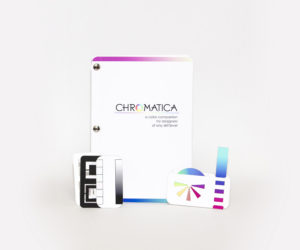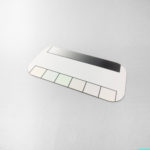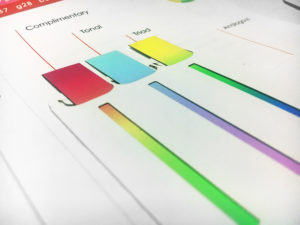 This booklet is a pocket reference. It covers the primary and secondary colors in-depth, briefly touching on tertiary color. It also includes gamut usage, color models, light, value, temperature, hierarchy, and palette usage.
This booklet is a pocket reference. It covers the primary and secondary colors in-depth, briefly touching on tertiary color. It also includes gamut usage, color models, light, value, temperature, hierarchy, and palette usage.



Designed for usage within the booklet, these paper tools break down concepts of color, value, off-white, and hierarchy into tangible, tactile forms, allowing the user to use them in their respective pages to understand concepts highlighted in the booklet. They are also usable outside of the booklet, as they are removable and small enough to be carried around in a pocket.
 The paper modular tools and respective inserts are pocketed directly into the booklet and the reside near the respective content they are designed to visualize.
The paper modular tools and respective inserts are pocketed directly into the booklet and the reside near the respective content they are designed to visualize.


 This booklet is a pocket reference. It covers the primary and secondary colors in-depth, briefly touching on tertiary color. It also includes gamut usage, color models, light, value, temperature, hierarchy, and palette usage.
This booklet is a pocket reference. It covers the primary and secondary colors in-depth, briefly touching on tertiary color. It also includes gamut usage, color models, light, value, temperature, hierarchy, and palette usage.


 The paper modular tools and respective inserts are pocketed directly into the booklet and the reside near the respective content they are designed to visualize.
The paper modular tools and respective inserts are pocketed directly into the booklet and the reside near the respective content they are designed to visualize.